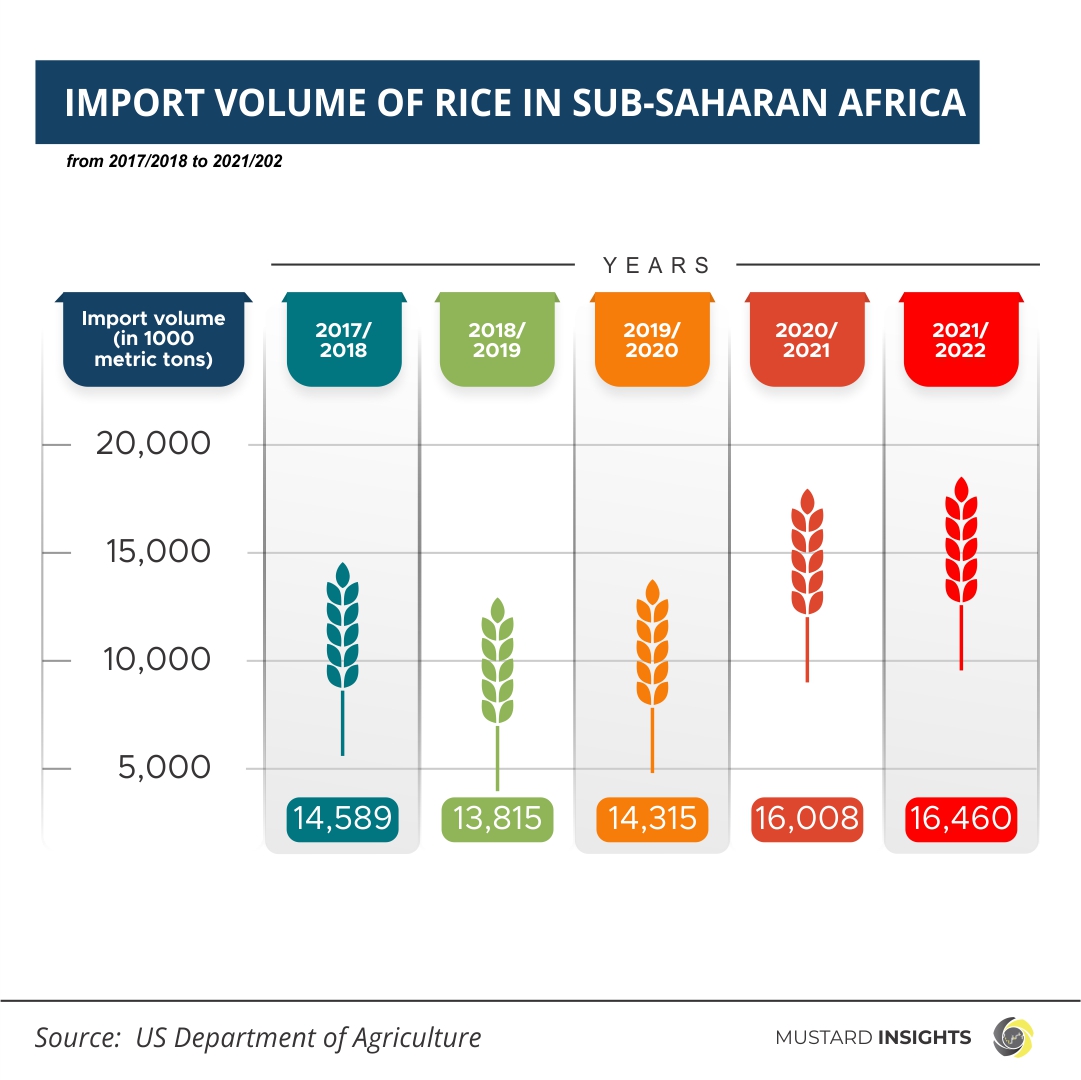Rice is the predominant dietary energy source for most Africans with demand for rice growing at over 6% per year - faster than for any other food staple in sub-Saharan Africa because of population growth, urbanization and changes in consumer preferences. Local rice production in Sub-Saharan Africa covers only about 60% of its current demand, resulting in imports averaging 14-15 million metric tonnes per year at a cost of over 6 billion USD. Africa’s import volume of rice accounts for 32% of world rice imports.

Rice is an important food crop and one of the most demanded staple consumed across countries in Africa.
Rice is the predominant dietary energy source for most Africans with demand for rice growing at over 6% per year - faster than for any other food staple in sub-Saharan Africa because of population growth, urbanization and changes in consumer preferences.
Local rice production in Sub-Saharan Africa covers only about 60% of its current demand, resulting in imports averaging 14-15 million metric tonnes per year at a cost of over 6 billion USD. Africa’s import volume of rice accounts for 32% of world rice imports.
Data by Statista shows that sub-Saharan Africa averages 23 million metric tonnes of rice production annually. In 2017/2018 and 2018/2019, rice production was below the average production volume, with 21.9 million metric tonnes and 22.3 million metric tonnes, respectively.
In 2019/2020, annual rice production rose to 24.8 million metric tonnes and dropped slightly 24.1 million metric tonnes in 2020/2021. Although annual rice production in sub-Saharan Africa dropped again to about 23.2 million metric tonnes in 2021/2022, it still hovered around the annual average of 23 million metric tonnes.
According to figures from the US Department of Agriculture, sub-Saharan Africa imported additional volumes of rice to meet its consumption demand. Sub-Saharan Africa imported 14.5 million metric tonnes in 2017/2018, dropping to 13.8 million tonnes in 2018/2019. The volume of rice imported rose in 2019/2020 to 14.3 million metric tons and rose further in 2020/2021 and 2021/2022 to 16 million metric tonnes and 16.4 million tonnes, respectively. Africa’s import volume of rice accounts for 32% of world rice imports.
Statistics provided by the United Nations Organisation estimates that the population of sub-Saharan Africa will reach 1.4 billion in 2030 and almost double to 2.12 billion by 2050. Most of this population growth will be in countries like Nigeria, the Democratic Republic of Congo, Ethiopia, Tanzania and Egypt . With four countries (Nigeria, DR Congo, Ethiopia and Tanzania) in sub-Saharan Africa and Nigeria being the most populous country and largest consumer of rice in Africa, sub-Saharan Africa may have to import more rice to meet the demands of its population.
Factors that may increase rice production in sub-Saharan Africa include developing new rice varieties and/or hybrids with higher yield potential, minimizing yield gap between current harvesting levels and maximum potential yields on varieties grown, and improving grain quality to reduce post-harvest loss and increase profitability.
Nigeria: Largest Importer of Rice in Africa
Thoughts?
We won't share your email address. All fields are required.
